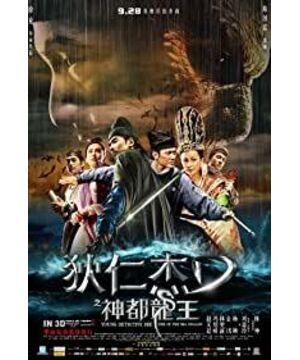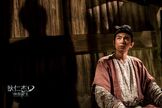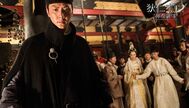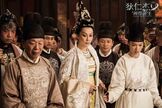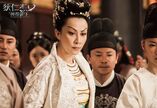Let's verify it again through the clues in the film. When Di Renjie asked about Yin Ruiji's surname, he said it was not the surname of the Central Plains, and then Yin Ruiji revealed that he was from Fuyu. If the Fuyu country of the Tang Dynasty was the contemporary Korea, then the surname "Yin" should still be left in today's Korea (although the ancestors of Korea and North Korea had not yet created characters in the Tang Dynasty, they had their own language, and they spoke Speak "Korean" with handwritten Chinese characters, so most of the ancient sounds are preserved in modern Korean). There is a "Yin" surname in Korean. The Korean pronunciation of "Yin" is 윤 (yoon), which is the eighth largest surname in South Korea, but when translated into Chinese, it is translated into a Chinese surname "Yin", such as the familiar Korean star. Yoon Eun Hye. Eun Rui Hee's Korean name and pronunciation is 윤예지, which further confirms that the country of Buyeo mentioned in "Dragon King of God" is Baekje, which is now the west coast of South Korea. Next comes the second question, is the East Island country in the film Japan? It can still be overturned with two reasons: First, it is clearly mentioned in the film that the Dongdao Kingdom is between the Datang Empire and the Fuyu Kingdom. Because their wars were implicated, they took revenge on the Tang Empire. If the East Island country is Japan, Japan is to the east of Fuyu Kingdom, and the Tang Empire is to the west of Fuyu Kingdom. Japan is not between the two countries at all, and will not be implicated by this war because of its geographical location; secondly, returning to history again, AD In 645, the Dahua reform of Japan completed the unification of the whole of Japan, and the country was officially named Japan. "New Book of Tang·Japanese Biography" records: In the first year of Xianheng (670), the Japanese country sent envoys to the Tang Dynasty. At this time, the Japanese country had "learned the language of Xia, hated the Japanese name, and changed the name to Japan." If in 670 AD, Japan sent a special People came to tell the Tang Dynasty that "the Japanese name is evil, and it is renamed Japan", indicating that before this, the Tang Dynasty still called Japan "Japanese" instead of Dongdao. In addition, the ancient Chinese names for Japan also include "East Ying" and "Fusang", but they have never been called East Island. To sum up the two points, this East Island country is by no means Japan. We are going back to positive thinking again, locking in from the front, and then using evidence to prove that since the information given to us in the film is a small island between Dongdao Country in the middle of Datang and Fuyu, after checking on the map, the largest one that meets this geographical condition is found. The island is Jeju Island. After some inquiries, it was found that the ancient names of Jeju include Doi, Dongyingzhou, Shera, Tammura, Toro, etc. Among these names, except for "Eastern Yingzhou", they are all "island countries". It means that it is located in the eastern waters of the Tang Dynasty, so it is very likely to be called the East Island Country at that time. The second point is that the people of the island in the middle of the film have excellent water skills. Di Renjie also mentioned that they rely on fishing all day long. Jeju Island is also very suitable for this point. Jeju Island is an island formed by volcanic activity 1.2 million years ago. Lava stone and very little arable land, so most of the aboriginal inhabitants make a living by fishing. Therefore, the East Island country mentioned in the film should be today's Jeju Island. You may still have a question. If the East Island country is Jeju Island, why is it that the people of the East Island country in the film speak Japanese rather than Korean? First of all, Jeju Island belonged to the Korean Peninsula regime in the late Yuan and early Ming Dynasty, so Jeju in the Tang Dynasty The island is not greatly influenced by the countries of the Korean peninsula. In addition, in fact, ancient Japanese and ancient Korean have the same root and the same origin. The language of the Buyeo people gradually evolved into Goguryeo, Baekje and ancient Japanese with the separation of regions. American scholar Christopher found that Goguryeo is similar to Japanese in terms of grammar and word formation. He proposed that the common origin of the ancient Japanese (Japanese) and Goguryeo people may be the Yiya people in the western Liaoning region of China facing the Bohai Sea. The Dongyuehai arrived in Japan, and after a few hundred years another branch migrated to the northeast, forming the Goguryeo people. Therefore, it is not unusual for the East Island country to speak old Japanese.
After some argumentation, we found that "Dragon King of Shendu" is about China (the Tang Dynasty) fighting Korea (Goguryeo) and the west half of South Korea (South Buyeo) in order to save the eastern half of South Korea (Silla), and then was attacked by Jeju Island ( East Island Country) story of revenge.
View more about Young Detective Dee: Rise of the Sea Dragon reviews


